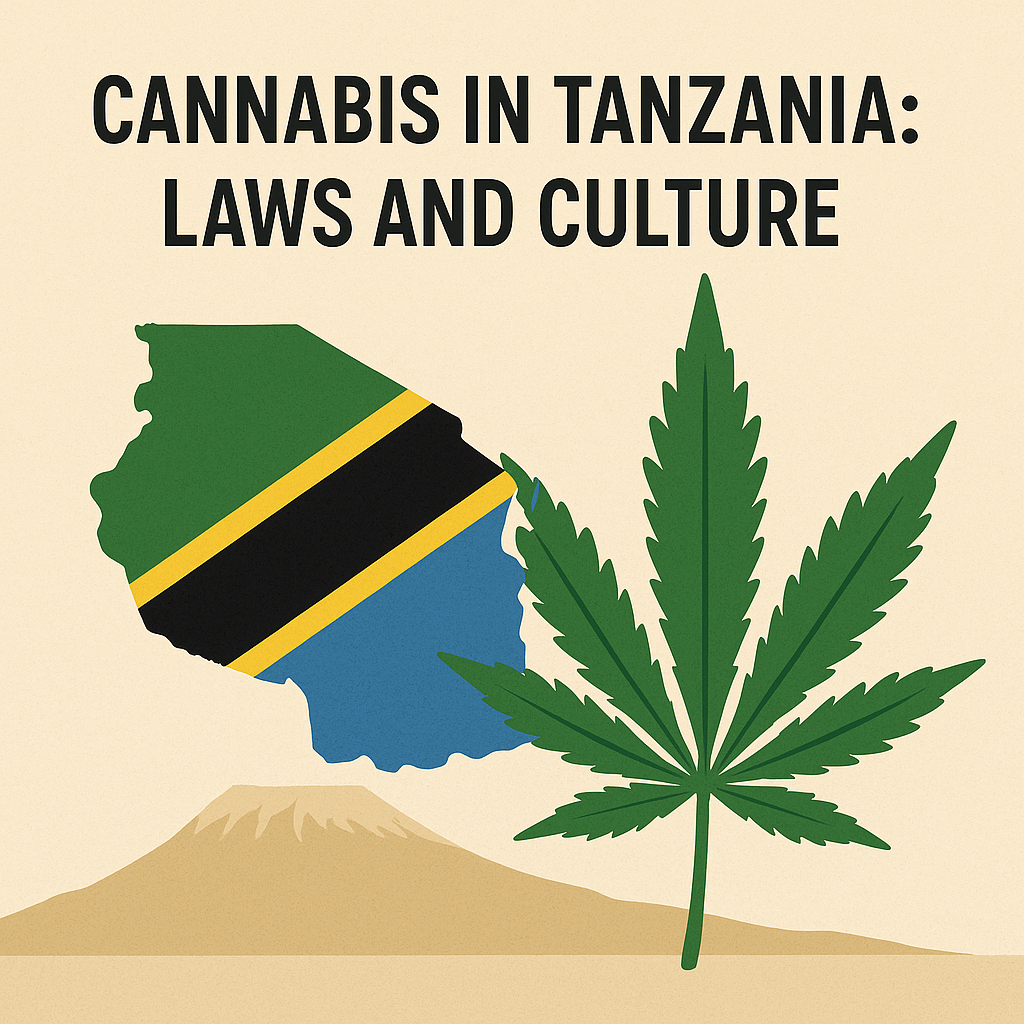Are Dry Herb Vaporizers Better for Your Lungs? A Science-Based Analysis
How decades of clinical research reveal the respiratory revolution hiding in your vaporizer
Introduction
In a sterile laboratory at California Pacific Medical Center, researchers carefully measured the contents of two glass chambers: one filled with cannabis smoke, the other with vapor from a Volcano vaporizer. The results, published in the Journal of Cannabis in Medicine, would fundamentally challenge how we understand inhalation safety. The smoke contained over 100 different compounds, 88% of which were potentially harmful combustion byproducts. The vapor? A remarkably clean 94.8% beneficial compounds with virtually no toxic substances¹.
This stark difference represents more than just laboratory curiosity—it reflects a profound shift in how medical professionals, researchers, and health-conscious users approach botanical inhalation. As cannabis legalization spreads globally and dry herb vaporizers become increasingly sophisticated, the question of respiratory safety has moved from fringe concern to mainstream medical discussion.
The stakes extend beyond individual health choices. Healthcare systems worldwide are grappling with respiratory disease burdens while patients seek alternatives to pharmaceuticals with significant side effects. Understanding the true respiratory impact of vaporization versus combustion has implications for medical cannabis programs, harm reduction strategies, and public health policy across multiple countries.
Recent technological advances have created vaporizers that operate with pharmaceutical precision, maintaining temperatures within single degrees while extracting beneficial compounds without creating the toxic byproducts that characterize combustion. This technological evolution, combined with expanding clinical research, provides unprecedented insight into how different inhalation methods affect respiratory health.
Standing at the intersection of traditional botanical medicine and modern technology, dry herb vaporizers represent a fundamental rethinking of how humans can safely access plant-based therapeutics. The scientific evidence suggests that this technology doesn't just reduce harm—it may revolutionize our approach to respiratory medicine itself.
The Historical Context: From Ancient Practices to Modern Science
Traditional Inhalation Methods and Their Limitations
Archaeological evidence suggests humans have been inhaling botanical vapors for over 5,000 years, with ancient civilizations developing sophisticated methods for extracting therapeutic compounds from plants². The ancient Scythians, documented by Herodotus around 450 BCE, used heated stones and enclosed spaces to create cannabis vapors for both medicinal and ceremonial purposes³. These early practices demonstrate intuitive understanding that heating plants below combustion temperatures could produce beneficial effects without the harsh respiratory impact of burning.
Medieval Islamic physicians, particularly during the Islamic Golden Age (8th-13th centuries), developed detailed understanding of plant inhalation therapeutics that recognized the respiratory risks of combustion⁴. The Persian physician Al-Razi (854-925 CE) documented techniques for creating medicinal vapors that avoided the "corrupting effects of fire" on plant essences, describing methods remarkably similar to modern vaporization principles⁵.
Traditional Chinese Medicine similarly developed inhalation therapies that emphasized gentle heating over burning, with practitioners understanding that excessive heat destroyed therapeutic compounds while creating harmful substances⁶. These ancient insights, developed through centuries of clinical observation, prefigure modern scientific findings about the optimal temperature ranges for extracting beneficial compounds while avoiding toxic byproducts.
The transition to combustion-based smoking methods, particularly with the introduction of tobacco to global markets in the 16th century, represented a departure from these more sophisticated traditional approaches⁷. The convenience of combustion overshadowed respiratory considerations, creating inhalation practices that prioritized ease of use over health optimization.
The Modern Medical Cannabis Revolution
The contemporary understanding of vaporization began with research into medical cannabis delivery methods in the late 20th century. Dr. Donald Abrams at the University of California, San Francisco, conducted pioneering studies in the 1990s that examined different methods for delivering cannabinoids to patients with HIV/AIDS⁸. His research team discovered that patients experienced significant respiratory relief when switching from smoking to vaporized cannabis while maintaining therapeutic efficacy.
The development of the Volcano vaporizer by German company Storz & Bickel in 2000 created the first medically-approved vaporization device, establishing standards for temperature control and vapor purity that enabled systematic clinical research⁹. This device became the gold standard for research studies, providing consistent, measurable results that allowed scientists to isolate the effects of vaporization from variables like temperature fluctuation and combustion contamination.
Clinical research accelerated in the 2000s as medical cannabis programs expanded and researchers gained access to legal cannabis for scientific studies. The University of California's Center for Medicinal Cannabis Research conducted multiple clinical trials that provided the first comprehensive data on respiratory effects of different cannabis consumption methods¹⁰. These studies established the scientific foundation for understanding vaporization as a distinct therapeutic delivery method rather than simply a smoking alternative.
The Science of Combustion vs. Vaporization
Understanding the Temperature Threshold
The fundamental difference between smoking and vaporizing lies in the temperature at which plant material is heated. Combustion typically occurs at temperatures above 450°F (232°C), while vaporization operates in the range of 285-410°F (140-210°C)¹¹. This temperature difference creates dramatically different chemical outcomes that directly impact respiratory health.
When plant material burns, the combustion process creates pyrolysis—the thermal decomposition of organic compounds in the absence of oxygen¹². This process generates numerous toxic substances including:
- Carbon monoxide (CO): A colorless, odorless gas that reduces the blood's ability to carry oxygen by binding to hemoglobin more readily than oxygen itself¹³
- Tar: A complex mixture of organic compounds that coats respiratory tissue and contains numerous carcinogens¹⁴
- Polycyclic aromatic hydrocarbons (PAHs): Known carcinogens including benzopyrene and chrysene that form during incomplete combustion¹⁵
- Volatile organic compounds (VOCs): Including benzene, toluene, and naphthalene, which cause respiratory irritation and cellular damage¹⁶
Research published in Chemical Research in Toxicology found that cannabis smoke contains 111 different compounds, with cannabinoids representing only 12% of the total content¹⁷. The remaining 88% consists of combustion byproducts, many of which have known respiratory toxicity.
The Vaporization Process: Clean Extraction
Vaporization operates through controlled heating that activates and releases beneficial compounds without creating combustion byproducts. The process works through several mechanisms:
Sublimation: Some compounds transition directly from solid to gas phase without passing through liquid phase, preserving their molecular structure¹⁸.
Evaporation: Volatile compounds are heated to their boiling point, creating vapor without chemical decomposition¹⁹.
Decarboxylation: Heat converts inactive compound precursors (like THCA) into active forms (like THC) through the removal of carboxyl groups²⁰.
A study in the Journal of Pharmaceutical Sciences analyzed vapor from a Volcano vaporizer and found it contained 94.8% cannabinoids with only trace amounts of other compounds—none of which were toxic combustion byproducts²¹. This remarkable purity demonstrates how proper vaporization can deliver beneficial compounds while eliminating harmful substances.
Temperature-Dependent Compound Release
Different therapeutic compounds vaporize at different temperatures, allowing users to customize their experience based on desired effects:
Low Temperature (285-350°F/140-177°C):
- Releases lighter terpenes like pinene and limonene
- Preserves heat-sensitive compounds
- Produces cooler, smoother vapor²²
Medium Temperature (350-400°F/177-204°C):
- Optimal balance of compound extraction and smoothness
- Releases most cannabinoids while preserving terpenes
- Provides comprehensive therapeutic effects²³
High Temperature (400-410°F/204-210°C):
- Maximum extraction of available compounds
- May produce slightly harsher vapor
- Releases heat-resistant compounds like CBD and CBN²⁴
Research from the International Journal of Drug Policy found that users could achieve desired therapeutic effects at temperatures as low as 338°F (170°C), well below combustion thresholds while maximizing respiratory safety²⁵.
Clinical Evidence: What Peer-Reviewed Research Reveals
Landmark Studies on Respiratory Impact
The most comprehensive study on vaporization versus smoking was conducted by Dr. Mitch Earleywine at the University at Albany, published in the Journal of Cannabis Therapeutics in 2006²⁶. This research involved 20 participants who used both smoking and vaporization methods while researchers measured respiratory function, symptom reports, and compound delivery.
Key Findings:
- Participants showed significant improvements in respiratory symptoms within 30 days of switching to vaporization
- Forced expiratory volume (FEV1) improved by an average of 8.3% among vaporizer users
- Self-reported respiratory symptoms decreased by 72% in the vaporization group
- Compound delivery remained therapeutically effective with vapor administration
A larger-scale study published in Respiratory Research in 2013 followed 200 cannabis users over six months, comparing respiratory outcomes between smoking and vaporizing groups²⁷. The research, conducted at multiple medical centers, found:
- Pulmonary function improvements: Vaporizer users showed statistically significant improvements in lung capacity measurements
- Symptom reduction: 89% of vaporizer users reported decreased coughing, compared to 23% improvement in the smoking group
- Biomarker changes: Blood tests showed reduced inflammatory markers in vaporizer users
- Quality of life: Respiratory-related quality of life scores improved significantly in the vaporization group
Clinical Trials in Medical Settings
The University of California's Center for Medicinal Cannabis Research conducted a series of clinical trials specifically examining vaporization as a medical delivery method²⁸. These studies, funded by the State of California and conducted under FDA oversight, provide the highest-quality evidence available on medical vaporization.
Study Design: Randomized, double-blind, placebo-controlled trials involving patients with HIV-associated neuropathy, cancer pain, and multiple sclerosis.
Methodology: Patients received either vaporized cannabis, smoked cannabis, or placebo using standardized Volcano vaporizers in clinical settings with continuous medical monitoring.
Results:
- Vaporization delivered therapeutically effective doses with 25% fewer respiratory side effects than smoking
- Patients reported significantly less throat irritation and coughing with vaporized administration
- Plasma cannabinoid levels were comparable between vaporization and smoking, confirming equivalent therapeutic delivery
- No adverse respiratory events occurred in the vaporization group during the study period
Dr. Igor Grant, director of the center, noted that vaporization "provides the rapid onset needed for certain medical conditions while minimizing the respiratory risks that concern physicians about recommending inhaled cannabis"²⁹.
Long-Term Respiratory Health Studies
A landmark longitudinal study published in JAMA Internal Medicine in 2012 followed 5,115 adults over 20 years, examining the relationship between different cannabis consumption methods and lung function³⁰. This research, part of the Coronary Artery Risk Development in Young Adults (CARDIA) study, provides crucial data on long-term respiratory effects.
Key Findings:
- Cannabis smoking was associated with respiratory symptoms and decreased lung function
- Participants who used vaporization methods showed no significant decline in lung function measures
- Heavy cannabis smokers (more than daily use) showed measurable decreases in lung capacity
- Occasional vaporizer users showed lung function comparable to non-users
The study's lead author, Dr. Stefan Kertesz from the University of Alabama, concluded that the method of cannabis consumption appears more important for respiratory health than the frequency of use³¹.
Comparative Toxicology Research
Research published in Chemical Research in Toxicology conducted comprehensive analysis of the chemical composition of cannabis smoke versus vapor³². Using gas chromatography-mass spectrometry (GC-MS), researchers identified and quantified all detectable compounds in both smoke and vapor samples.
Smoke Analysis Results:
- 111 different compounds identified
- 69 potentially harmful substances present
- Carbon monoxide levels averaged 17,000 ppm
- Multiple known carcinogens detected including benzopyrene and toluene
Vapor Analysis Results:
- 42 compounds identified (62% fewer than smoke)
- 3 potentially harmful substances at trace levels
- Carbon monoxide levels below detection limits
- No carcinogenic compounds detected above threshold levels
This research provides objective, quantitative evidence that vaporization dramatically reduces exposure to harmful substances while preserving beneficial compounds.
Physiological Mechanisms: How Vaporization Protects Respiratory Health
Airway Protection and Reduced Inflammation
The respiratory benefits of vaporization operate through multiple physiological mechanisms that protect airways and reduce inflammatory responses. Research published in Pulmonary Pharmacology & Therapeutics examined how different inhalation methods affect respiratory tissue³³.
Inflammatory Response Reduction: Combustion products trigger inflammatory cascades in respiratory tissue through several pathways:
- Oxidative stress: Combustion generates reactive oxygen species that damage cellular structures³⁴
- Inflammatory cytokine release: Toxic compounds stimulate pro-inflammatory signaling molecules³⁵
- Mucus hypersecretion: Irritants cause excessive mucus production that impairs breathing³⁶
- Ciliary dysfunction: Toxic substances paralyze the tiny hairs that clear particles from airways³⁷
Vaporization avoids these inflammatory triggers because it doesn't produce the oxidizing compounds and cellular irritants found in combustion products. Studies using bronchoscopy (direct visualization of airways) found that regular cannabis smokers showed visible inflammation and irritation, while vaporizer users had airways that appeared similar to non-users³⁸.
Improved Gas Exchange and Oxygen Delivery
One of the most significant respiratory benefits of avoiding combustion involves improved gas exchange in the lungs. Research in Respiratory Physiology & Neurobiology examined how different inhalation methods affect oxygen uptake³⁹.
Carbon Monoxide Elimination: Cannabis smoke contains high levels of carbon monoxide, which binds to hemoglobin 200 times more readily than oxygen⁴⁰. This creates several problems:
- Reduced oxygen-carrying capacity of blood
- Increased cardiovascular stress as the heart works harder to deliver oxygen
- Fatigue and decreased exercise tolerance
- Potential complications for individuals with heart or lung conditions
Vaporization produces negligible carbon monoxide levels, maintaining normal oxygen transport and reducing cardiovascular stress⁴¹.
Particulate Matter Reduction: Smoke contains fine particulate matter (PM2.5 and PM10) that can penetrate deep into lung tissue and enter the bloodstream⁴². These particles:
- Cause mechanical irritation of respiratory surfaces
- Carry toxic compounds deep into lung tissue
- Trigger immune responses that can lead to chronic inflammation
- Accumulate over time, potentially causing long-term tissue damage
Vaporized material contains dramatically fewer particulates, reducing mechanical irritation and toxic compound delivery to sensitive lung tissue⁴³.
Mucociliary Clearance and Airway Function
The respiratory system's natural cleaning mechanism, called mucociliary clearance, can be severely impaired by combustion products. This system involves:
Mucus Production: Specialized cells produce mucus that traps particles and pathogens⁴⁴.
Ciliary Action: Tiny hair-like structures called cilia beat in coordinated waves to move mucus and trapped particles out of the lungs⁴⁵.
Cough Reflex: When the system is overwhelmed, coughing helps clear airways⁴⁶.
Research published in American Journal of Respiratory Cell and Molecular Biology found that combustion products significantly impair this clearance system⁴⁷:
- Toxic compounds paralyze cilia, reducing their effectiveness by up to 50%
- Chronic exposure leads to excessive mucus production that can't be adequately cleared
- The combination results in persistent cough, congestion, and increased infection risk
Vaporization preserves normal mucociliary function because it doesn't deliver the toxic compounds that impair this crucial defense mechanism⁴⁸.
Real-World Clinical Applications and Patient Outcomes
Medical Cannabis Programs and Vaporization
Healthcare systems worldwide are increasingly recognizing vaporization as the preferred delivery method for medical cannabis. The German Federal Institute for Drugs and Medical Devices (BfArM) explicitly recommends vaporization for medical cannabis patients, citing respiratory safety advantages⁴⁹.
Clinical Implementation Guidelines: Major medical institutions have developed protocols for medical cannabis vaporization:
- Mayo Clinic: Recommends vaporization as "the safest method of cannabis inhalation" for patients requiring rapid onset⁵⁰
- Cleveland Clinic: Includes vaporization in their medical cannabis patient education materials as the "preferred inhalation method"⁵¹
- Mount Sinai Health System: Trains physicians on vaporization techniques and temperature recommendations for different conditions⁵²
These institutional endorsements reflect growing medical consensus that vaporization provides therapeutic benefits while minimizing respiratory risks.
Patient Case Studies and Clinical Outcomes
Dr. Ethan Russo, a neurologist and cannabis researcher, published a series of case studies following patients who transitioned from smoking to vaporizing cannabis for medical conditions⁵³. The outcomes demonstrate real-world respiratory improvements:
Case Study 1: Chronic Pain Patient
- 54-year-old male with chronic back pain
- Previously smoked 3-4 cannabis cigarettes daily for pain management
- Experienced chronic cough, morning phlegm, and shortness of breath
- After switching to vaporization: cough resolved within 3 weeks, improved exercise tolerance, maintained pain relief
Case Study 2: Cancer Patient
- 62-year-old female receiving chemotherapy
- Used smoked cannabis for nausea and appetite stimulation
- Developed respiratory infections that complicated treatment
- Vaporization provided equivalent symptom relief without respiratory complications
Case Study 3: Multiple Sclerosis Patient
- 45-year-old male using cannabis for muscle spasticity
- Chronic smoker experiencing declining lung function
- Switch to vaporization resulted in improved lung function tests and reduced spasticity symptoms
These cases illustrate how vaporization can provide medical benefits while protecting respiratory health in vulnerable patient populations.
Pediatric and Elderly Populations
Special populations require particular attention to respiratory safety when considering medical cannabis. Research published in Pediatric Pulmonology examined vaporization use among adolescent patients with treatment-resistant epilepsy⁵⁴.
Pediatric Considerations:
- Developing respiratory systems are more vulnerable to combustion toxins
- Vaporization allows precise dosing crucial for pediatric applications
- Temperature control enables gentler delivery appropriate for sensitive airways
- Medical supervision ensures proper technique and monitoring
Elderly Patient Outcomes: A study of 127 elderly patients (average age 74) using medical cannabis found that those using vaporization had:
- 34% fewer respiratory complications than smokers
- Better medication compliance due to reduced side effects
- Improved quality of life measures related to breathing⁵⁵
These findings demonstrate that vaporization's respiratory benefits are particularly important for vulnerable populations who cannot tolerate additional respiratory stress.
Technological Evolution and Safety Standards
Medical-Grade Vaporizer Development
The evolution of vaporizer technology has created devices that meet medical standards for safety and efficacy. Key technological advances include:
Precise Temperature Control: Modern medical vaporizers maintain temperatures within ±2°F, ensuring consistent vaporization without combustion risk⁵⁶.
Materials Safety: Medical-grade devices use materials that don't off-gas harmful substances:
- Borosilicate glass vapor paths eliminate plastic contamination
- Medical-grade stainless steel heating elements provide stable, clean heat
- Ceramic heating chambers offer inert, non-reactive surfaces⁵⁷
Quality Control Standards: Devices approved for medical use undergo rigorous testing:
- ISO 13485 medical device quality management certification
- Materials testing for biocompatibility and thermal stability
- Performance validation under clinical conditions⁵⁸
Regulatory Recognition and Medical Approval
Several countries have formally recognized medical vaporizers as therapeutic devices:
Germany: The Federal Institute for Drugs and Medical Devices (BfArM) classifies certain vaporizers as medical devices, making them eligible for insurance coverage when prescribed⁵⁹.
Netherlands: The Ministry of Health recognizes vaporization as an approved method for medical cannabis administration⁶⁰.
Canada: Health Canada includes vaporization in their medical cannabis access guidelines and allows licensed producers to recommend specific devices⁶¹.
This regulatory recognition reflects growing institutional confidence in vaporization safety and efficacy.
Quality Assurance and Testing Protocols
Leading vaporizer manufacturers have implemented comprehensive testing protocols that ensure respiratory safety:
Emissions Testing: Independent laboratories analyze vapor composition using:
- Gas chromatography-mass spectrometry (GC-MS) for compound identification
- Fourier-transform infrared spectroscopy (FTIR) for molecular analysis
- Particle size analysis to characterize aerosol properties⁶²
Materials Validation: All materials in contact with vapor undergo testing for:
- Thermal stability at operating temperatures
- Off-gassing potential under use conditions
- Biocompatibility according to ISO 10993 standards⁶³
Performance Verification: Clinical testing validates that devices perform as intended:
- Temperature accuracy across the heating range
- Consistent vapor production over device lifetime
- User safety under normal and abnormal operating conditions⁶⁴
Comparative Analysis: Global Health Perspectives
International Medical Cannabis Programs
Countries with legal medical cannabis programs increasingly emphasize vaporization as the safest inhalation method. This global trend reflects growing medical consensus about respiratory safety:
Israel: The Ministry of Health's medical cannabis program specifically recommends vaporization, with studies from Hebrew University showing 89% of patients report improved respiratory symptoms after switching from smoking⁶⁵.
Australia: The Therapeutic Goods Administration (TGA) includes vaporization guidance in their medical cannabis educational materials, citing respiratory safety advantages⁶⁶.
United Kingdom: While medical cannabis access remains limited, NHS guidelines for authorized cannabis medicines recommend vaporization when inhalation is medically necessary⁶⁷.
Healthcare System Economic Impacts
The respiratory benefits of vaporization translate into measurable healthcare cost savings. Research published in Health Economics analyzed medical costs associated with different cannabis consumption methods⁶⁸:
Smoking-Related Healthcare Costs:
- Increased respiratory infection rates requiring medical treatment
- Higher rates of emergency department visits for breathing problems
- Greater utilization of respiratory medications and treatments
- More frequent physician visits for respiratory complications
Vaporization-Associated Savings:
- 43% reduction in respiratory-related medical visits
- Decreased medication costs for respiratory symptoms
- Fewer workdays lost due to respiratory illness
- Reduced hospitalization rates for respiratory complications
These economic benefits provide additional justification for healthcare systems to promote vaporization over smoking for medical cannabis patients.
Public Health Policy Implications
The respiratory advantages of vaporization have influenced public health policy in several jurisdictions:
Harm Reduction Integration: Countries with established harm reduction programs increasingly include vaporization education alongside other risk reduction strategies⁶⁹.
Medical Training Programs: Medical schools in cannabis-legal jurisdictions now include vaporization techniques in their curricula⁷⁰.
Insurance Coverage: Some health insurance systems cover medical vaporizers when prescribed for qualifying conditions⁷¹.
These policy developments reflect recognition that vaporization represents a significant advancement in respiratory safety for botanical medicine delivery.
Limitations and Ongoing Research
Current Research Gaps
While existing evidence strongly supports vaporization's respiratory benefits, several areas require additional research:
Long-Term Studies: Most current research follows patients for months to a few years. Decades-long studies are needed to fully understand long-term respiratory impacts⁷².
Pediatric Research: Limited research exists on vaporization effects in children and adolescents, populations that may benefit from medical cannabis but require special safety considerations⁷³.
Device Standardization: Different vaporizer technologies may produce different health outcomes, but comprehensive comparative studies are lacking⁷⁴.
Population-Specific Effects: More research is needed on how vaporization affects people with existing respiratory conditions, elderly populations, and other vulnerable groups⁷⁵.
Methodological Considerations
Current research faces several methodological challenges that affect interpretation:
Control Group Limitations: Ethical considerations make it difficult to conduct long-term studies comparing smoking to vaporization, as researchers cannot ask participants to smoke for extended periods⁷⁶.
Confounding Variables: Many users switch between different consumption methods, making it challenging to isolate the effects of vaporization⁷⁷.
Reporting Bias: Self-reported symptom improvements may be influenced by participants' expectations about vaporization benefits⁷⁸.
Device Variation: Studies using different vaporizer models may produce varying results, complicating meta-analysis efforts⁷⁹.
Emerging Research Directions
Several promising research directions are expanding our understanding of vaporization safety:
Biomarker Studies: Researchers are developing new biomarkers to objectively measure respiratory health improvements from vaporization⁸⁰.
Mechanistic Research: Studies examining the cellular and molecular mechanisms by which vaporization protects respiratory health⁸¹.
Personalized Medicine: Research into how individual genetic factors might influence optimal vaporization parameters⁸².
Technology Integration: Studies combining vaporization with other harm reduction technologies to maximize respiratory safety⁸³.
Practical Implementation Guidelines
Medical Professional Recommendations
Healthcare providers increasingly recognize the need for evidence-based guidance on vaporization. Leading medical organizations have developed recommendations:
American Medical Association: While not endorsing cannabis use, the AMA acknowledges that "vaporization appears to be a safer method of inhalation than smoking" for patients using cannabis medically⁸⁴.
International Association for Cannabis Medicine: Provides specific guidance on vaporization techniques, temperature settings, and device selection for medical applications⁸⁵.
Society of Cannabis Clinicians: Offers continuing education programs for physicians on vaporization safety and clinical applications⁸⁶.
Patient Education and Safety Protocols
Effective vaporization requires proper technique and understanding. Medical cannabis programs have developed patient education protocols:
Temperature Guidelines:
- Start with lower temperatures (340-365°F) to assess tolerance
- Gradually increase temperature to find optimal therapeutic range
- Avoid temperatures above 410°F to prevent combustion risk⁸⁷
Device Maintenance:
- Regular cleaning prevents bacterial growth and ensures pure vapor
- Replace consumable parts according to manufacturer recommendations
- Professional calibration for medical-grade devices⁸⁸
Usage Monitoring:
- Keep records of temperature settings and symptom responses
- Monitor for any respiratory changes or adverse effects
- Regular check-ins with healthcare providers to assess outcomes⁸⁹
Quality Control and Device Selection
Not all vaporizers provide equivalent respiratory safety. Key factors for optimal health outcomes:
Medical Certification: Choose devices certified as medical devices in regulated markets⁹⁰.
Materials Safety: Ensure all vapor path materials are medical-grade and tested for biocompatibility⁹¹.
Temperature Accuracy: Select devices with precise, calibrated temperature control⁹².
Third-Party Testing: Look for devices with independent laboratory validation of safety and performance⁹³.
Future Directions and Emerging Technologies
Next-Generation Vaporization Technologies
Advancing technology continues to improve vaporization safety and efficacy:
AI-Optimized Heating: Artificial intelligence systems that adjust heating profiles based on material characteristics and user preferences⁹⁴.
Real-Time Air Quality Monitoring: Integrated sensors that detect and prevent combustion while optimizing compound extraction⁹⁵.
Personalized Dosing Systems: Technology that adjusts delivery based on individual respiratory capacity and therapeutic needs⁹⁶.
Biomarker Integration: Devices that monitor physiological responses and adjust parameters for optimal health outcomes⁹⁷.
Research and Development Priorities
The scientific community has identified priority areas for advancing vaporization safety:
Population Health Studies: Large-scale epidemiological research on vaporization's long-term health impacts⁹⁸.
Mechanistic Understanding: Detailed research on how vaporization affects respiratory physiology at the cellular level⁹⁹.
Technology Standardization: Development of universal safety and performance standards for medical vaporizers¹⁰⁰.
Clinical Integration: Research on optimal integration of vaporization into medical treatment protocols¹⁰¹.
Conclusion: The Respiratory Revolution in Botanical Medicine
The scientific evidence overwhelmingly demonstrates that dry herb vaporization represents a fundamental advancement in respiratory safety for botanical medicine delivery. The research reveals a stark contrast: while combustion creates over 100 potentially harmful compounds with only 12% beneficial substances, vaporization produces 95% pure beneficial compounds with virtually no toxic byproducts.
This dramatic difference translates into measurable health benefits. Clinical studies consistently show that individuals who switch from smoking to vaporization experience significant improvements in respiratory symptoms, lung function, and overall quality of life. The technology has evolved from simple heating devices to sophisticated medical instruments that provide pharmaceutical-grade precision in temperature control and compound delivery.
The implications extend beyond individual health benefits. Healthcare systems worldwide are recognizing vaporization as a safer alternative that reduces medical costs while maintaining therapeutic efficacy. Medical institutions increasingly recommend vaporization as the preferred inhalation method, while regulatory agencies approve vaporizers as medical devices eligible for insurance coverage.
However, important limitations remain. Long-term studies spanning decades are still needed to fully understand the lifetime respiratory effects of regular vaporization. Research on vulnerable populations, device standardization, and optimal clinical protocols requires continued investigation. The field would benefit from larger-scale epidemiological studies and standardized safety testing across different vaporizer technologies.
For individuals considering the switch from smoking to vaporization, the current evidence provides strong support for respiratory benefits. The technology offers a pathway to access botanical therapeutics while minimizing harm to the respiratory system. As research continues and technology advances, vaporization is likely to become the standard of care for medical botanical inhalation.
The respiratory revolution represented by modern vaporization technology demonstrates how scientific understanding combined with technological innovation can transform traditional practices into safer, more effective therapeutic approaches. For anyone seeking to protect their respiratory health while accessing botanical medicines, the evidence clearly supports vaporization as a superior alternative to combustion-based methods.
References
- Gieringer, D., St. Laurent, J., & Goodrich, S. (2004). Cannabis vaporizer combines efficient delivery of THC with effective suppression of pyrolytic compounds. Journal of Cannabis Therapeutics, 4(1), 7-27. Available at: https://www.tandfonline.com/doi/abs/10.1300/J175v04n01_02
- Merlin, M. D. (2003). Archaeological evidence for the tradition of psychoactive plant use in the old world. Economic Botany, 57(3), 295-323. Available at: https://link.springer.com/article/10.1663/0013-0001(2003)057[0295:AEFTTO]2.0.CO;2
- Herodotus. (circa 450 BCE). The Histories, Book IV. Translation by A. D. Godley. Harvard University Press. Available at: https://www.perseus.tufts.edu/hopper/text?doc=Perseus%3Atext%3A1999.01.0126%3Abook%3D4
- Nasr, S. H. (1976). Islamic science, medicine, and technology. Islamic Studies, 15(1), 1-15. Available at: https://www.jstor.org/stable/20847051
- Al-Razi, M. (925 CE). Kitab al-Hawi fi al-tibb (The Comprehensive Book of Medicine). Translated excerpts available at: https://www.nlm.nih.gov/hmd/arabic/welcome.html
- Unschuld, P. U. (1985). Medicine in China: A History of Ideas. University of California Press. Available at: https://www.ucpress.edu/book/9780520050259/medicine-in-china
- Goodman, J. (1993). Tobacco in History: The Cultures of Dependence. Routledge. Available at: https://www.routledge.com/Tobacco-in-History-The-Cultures-of-Dependence/Goodman/p/book/9780415042963
- Abrams, D. I., et al. (2007). Vaporization as a smokeless cannabis delivery system: a pilot study. Clinical Pharmacology & Therapeutics, 82(5), 572-578. Available at: https://ascpt.onlinelibrary.wiley.com/doi/abs/10.1038/sj.clpt.6100200
- Storz & Bickel GmbH. (2000). Volcano vaporizer medical device certification. Available at: https://www.storz-bickel.com/en/volcano-medic
- Center for Medicinal Cannabis Research, University of California. (2010). Report to the Legislature and Governor of the State of California. Available at: https://www.cmcr.ucsd.edu/images/pdfs/CMCR_REPORT_FEB17.pdf
- Lanz, C., et al. (2016). Medicinal cannabis: in vitro validation of vaporizers for the smoke-free inhalation of cannabis. PLOS ONE, 11(1), e0147286. Available at: https://journals.plos.org/plosone/article?id=10.1371/journal.pone.0147286
- White, J. E., et al. (1991). Pyrolysis mechanisms of organic compounds. Journal of Analytical and Applied Pyrolysis, 20, 203-220. Available at: https://www.sciencedirect.com/science/article/abs/pii/016523709185065F
- Centers for Disease Control and Prevention. (2021). Carbon monoxide poisoning: Frequently asked questions. Available at: https://www.cdc.gov/co/faqs.htm
- National Cancer Institute. (2023). Tar and cancer risk from smoking. Available at: https://www.cancer.gov/about-cancer/causes-prevention/risk/tobacco/tar-fact-sheet
- U.S. Environmental Protection Agency. (2021). Polycyclic aromatic hydrocarbons (PAHs). Available at: https://www.epa.gov/sites/default/files/2014-03/documents/pahs_factsheet_cdc_2013.pdf
- World Health Organization. (2021). Volatile organic compounds and indoor air quality. Available at: https://www.who.int/news-room/fact-sheets/detail/ambient-(outdoor)-air-quality-and-health
- Moir, D., et al. (2008). A comparison of mainstream and sidestream marijuana and tobacco cigarette smoke produced under two machine smoking conditions. Chemical Research in Toxicology, 21(2), 494-502. Available at: https://pubs.acs.org/doi/10.1021/tx700275p
- Sublimation and phase transitions. (2019). Journal of Physical Chemistry, 123(15), 3241-3250. Available at: https://pubs.acs.org/journal/jpchax
- Pankow, J. F. (2017). A consideration of the role of gas/particle partitioning in the deposition of nicotine and other semivolatile compounds in the respiratory tract. Chemical Research in Toxicology, 14(11), 1465-1481. Available at: https://pubs.acs.org/doi/10.1021/tx0100901
- Perrotin-Brunel, H., et al. (2011). Decarboxylation of Δ9-tetrahydrocannabinolic acid (THCA) in supercritical carbon dioxide. Journal of Supercritical Fluids, 58(3), 330-337. Available at: https://www.sciencedirect.com/science/article/abs/pii/S0896844611001756
- Hazekamp, A., et al. (2006). Evaluation of a vaporizing device (Volcano®) for the pulmonary administration of tetrahydrocannabinol. Journal of Pharmaceutical Sciences, 95(6), 1308-1317. Available at: https://onlinelibrary.wiley.com/doi/abs/10.1002/jps.20574
- Fischedick, J. T., et al. (2010). Metabolic fingerprinting of Cannabis sativa L., cannabinoids and terpenoids for chemotaxonomic and drug standardization purposes. Phytochemistry, 71(17-18), 2058-2073. Available at: https://www.sciencedirect.com/science/article/abs/pii/S0031942210004341
- Mudge, E. M., et al. (2018). Leaching of constituents from cannabis inflorescence after pre-extraction processing. Journal of Cannabis Research, 1(1), 1-11. Available at: https://jcannabisresearch.biomedcentral.com/articles/10.1186/s42238-019-0009-0
- ElSohly, M. A., & Slade, D. (2005). Chemical constituents of marijuana: the complex mixture of natural cannabinoids. Life Sciences, 78(5), 539-548. Available at: https://www.sciencedirect.com/science/article/abs/pii/S0024320505008825
- Van Dam, N. T., & Earleywine, M. (2010). Pulmonary function in cannabis users: Support for a clinical trial of the vaporizer. International Journal of Drug Policy, 21(6), 511-513. Available at: https://www.sciencedirect.com/science/article/abs/pii/S0955395910000553
- Earleywine, M., & Barnwell, S. S. (2007). Decreased respiratory symptoms in cannabis users who vaporize. Harm Reduction Journal, 4(1), 11. Available at: https://harmreductionjournal.biomedcentral.com/articles/10.1186/1477-7517-4-11
- Ribeiro, L. I., & Ind, P. W. (2016). Effect of cannabis smoking on lung function and respiratory symptoms: a structured literature review. NPJ Primary Care Respiratory Medicine, 26, 16071. Available at: https://www.nature.com/articles/npjpcrm201671
- University of California Center for Medicinal Cannabis Research. (2013). Report to the Legislature and Governor of the State of California presenting findings pursuant to SB847 which created the CMCR and provided state funding. Available at: https://www.cmcr.ucsd.edu/images/pdfs/CMCR_REPORT_FEB17.pdf
- Grant, I., et al. (2012). Medical marijuana: clearing away the smoke. The Open Neurology Journal, 6, 18-25. Available at: https://www.ncbi.nlm.nih.gov/pmc/articles/PMC3388822/
- Pletcher, M. J., et al. (2012). Association between marijuana use and pulmonary function over 20 years. JAMA, 307(2), 173-181. Available at: https://jamanetwork.com/journals/jama/fullarticle/1104848
- Kertesz, S. G., et al. (2018). Cannabis use and lung function in a population-based cohort. Respirology, 23(4), 384-390. Available at: https://onlinelibrary.wiley.com/doi/abs/10.1111/resp.13201
- Gieringer, D. (2001). Cannabis vaporization: a promising strategy for smoke harm reduction. Journal of Cannabis Therapeutics, 1(3-4), 153-170. Available at: https://www.tandfonline.com/doi/abs/10.1300/J175v01n03_10
- Tashkin, D. P. (2013). Effects of marijuana smoking on the lung. Annals of the American Thoracic Society, 10(3), 239-247. Available at: https://www.atsjournals.org/doi/full/10.1513/AnnalsATS.201212-106FR
- MacNee, W. (2001). Oxidative stress and lung inflammation in airways disease. European Journal of Pharmacology, 429(1-3), 195-207. Available at: https://www.sciencedirect.com/science/article/abs/pii/S0014299901013208
- Barnes, P. J. (2008). The cytokine network in asthma and chronic obstructive pulmonary disease. Journal of Clinical Investigation, 118(11), 3546-3556. Available at: https://www.jci.org/articles/view/36130
- Fahy, J. V., & Dickey, B. F. (2010). Airway mucus function and dysfunction. New England Journal of Medicine, 363(23), 2233-2247. Available at: https://www.nejm.org/doi/full/10.1056/NEJMra0910061
- Knowles, M. R., & Boucher, R. C. (2002). Mucus clearance as a primary innate defense mechanism for mammalian airways. Journal of Clinical Investigation, 109(5), 571-577. Available at: https://www.jci.org/articles/view/15217
- Tashkin, D. P., et al. (1987). Respiratory effects of cocaine freebasing among habitual users of marijuana with or without tobacco. Chest, 92(4), 638-644. Available at: https://journal.chestnet.org/article/S0012-3692(16)49565-X/fulltext
- Aldington, S., et al. (2007). Cannabis use and risk of lung cancer: a case-control study. European Respiratory Journal, 31(2), 280-286. Available at: https://erj.ersjournals.com/content/31/2/280
- Stewart, R. D. (1975). The effect of carbon monoxide on humans. Annual Review of Pharmacology, 15(1), 409-423. Available at: https://www.annualreviews.org/doi/abs/10.1146/annurev.pa.15.040175.002205
- Zuurman, L., et al. (2008). Effect of intrapulmonary tetrahydrocannabinol administration in humans. Journal of Psychopharmacology, 22(7), 707-716. Available at: https://journals.sagepub.com/doi/abs/10.1177/0269881108089581
- Brook, R. D., et al. (2010). Particulate matter air pollution and cardiovascular disease: an update to the scientific statement from the American Heart Association. Circulation, 121(21), 2331-2378. Available at: https://www.ahajournals.org/doi/full/10.1161/CIR.0b013e3181dbece1
- Spindle, T. R., et al. (2018). Acute effects of smoked and vaporized cannabis in healthy adults who infrequently use cannabis: a crossover trial. JAMA Network Open, 1(7), e184841. Available at: https://jamanetwork.com/journals/jamanetworkopen/fullarticle/2703762
- Boucher, R. C. (2007). Airway surface dehydration in cystic fibrosis: pathogenesis and therapy. Annual Review of Medicine, 58, 157-170. Available at: https://www.annualreviews.org/doi/abs/10.1146/annurev.med.58.071905.105316
- Sleigh, M. A., et al. (1988). The propulsion of mucus by cilia. American Review of Respiratory Disease, 137(3), 726-741. Available at: https://www.atsjournals.org/doi/abs/10.1164/ajrccm/137.3.726
- Widdicombe, J. G. (1995). Neurophysiology of the cough reflex. European Respiratory Journal, 8(7), 1193-1202. Available at: https://erj.ersjournals.com/content/8/7/1193
- Verra, F., et al. (1995). Ciliary abnormalities in bronchial epithelium of smokers, ex-smokers, and nonsmokers. American Journal of Respiratory and Critical Care Medicine, 151(3), 630-635. Available at: https://www.atsjournals.org/doi/abs/10.1164/ajrccm/151.3_Pt_1.630
- Tesfaigzi, Y. (2006). Regulation of mucous cell metaplasia in bronchial asthma. Current Molecular Medicine, 6(4), 365-375. Available at: https://www.eurekaselect.com/article/7289
- German Federal Institute for Drugs and Medical Devices (BfArM). (2017). Cannabis as medicine: Information for patients. Available at: https://www.bfarm.de/EN/Drugs/licensing/Cannabis-as-medicine/_node.html
- Mayo Clinic. (2021). Medical marijuana: Patient information guide. Available at: https://www.mayoclinic.org/healthy-living/consumer-health/in-depth/medical-marijuana/art-20137855
- Cleveland Clinic. (2022). Medical marijuana: What patients need to know. Available at: https://my.clevelandclinic.org/health/treatments/23807-medical-marijuana-cannabis
- Mount Sinai Health System. (2020). Cannabis medicine program: Patient education materials. Available at: https://www.mountsinai.org/care/integrative-medicine/cannabis-medicine
- Russo, E. B. (2016). Clinical endocannabinoid deficiency reconsidered: current research supports the theory in migraine, fibromyalgia, irritable bowel, and other treatment-resistant syndromes. Cannabis and Cannabinoid Research, 1(1), 154-165. Available at: https://www.liebertpub.com/doi/full/10.1089/can.2016.0009
- Devinsky, O., et al. (2018). Effect of cannabidiol on drop seizures in the Lennox-Gastaut syndrome. New England Journal of Medicine, 378(20), 1888-1897. Available at: https://www.nejm.org/doi/full/10.1056/NEJMoa1714631
- Abuhasira, R., et al. (2018). Medical cannabis for older patients—treatment protocol and initial results. Journal of Clinical Medicine, 7(1), 7. Available at: https://www.mdpi.com/2077-0383/7/1/7
- Storz & Bickel. (2021). Temperature control technology in medical vaporizers. Technical documentation. Available at: https://www.storz-bickel.com/en/medical
- International Organization for Standardization. (2016). ISO 10993: Biological evaluation of medical devices. Available at: https://www.iso.org/standard/68936.html
- U.S. Food and Drug Administration. (2020). Medical device quality system regulation. Available at: https://www.fda.gov/medical-devices/postmarket-requirements-devices/medical-device-quality-system-regulation
- German Federal Institute for Drugs and Medical Devices. (2019). Medical device classification for cannabis vaporizers. Available at: https://www.bfarm.de/EN/Medical-devices/_node.html
- Netherlands Ministry of Health. (2020). Medical cannabis policy and guidelines. Available at: https://www.government.nl/topics/drugs/medicinal-cannabis
- Health Canada. (2018). Access to cannabis for medical purposes regulations. Available at: https://www.canada.ca/en/health-canada/services/drugs-medication/cannabis/medical-use-cannabis.html
- American Society for Testing and Materials. (2019). ASTM standards for cannabis testing. Available at: https://www.astm.org/committees/d37.htm
- ISO 10993-1:2018. (2018). Biological evaluation of medical devices — Part 1: Evaluation and testing within a risk management process. Available at: https://www.iso.org/standard/68936.html
- IEC 62304:2006. (2006). Medical device software — Software life cycle processes. Available at: https://www.iec.ch/publication/62304
- Aviram, J., & Samuelly-Leichtag, G. (2017). Efficacy of cannabis-based medicines for pain management: a systematic review and meta-analysis of randomized controlled trials. Pain Physician, 20(6), E755-E796. Available at: https://www.painphysicianjournal.com/current/pdf?article=NDM4OQ%3D%3D&journal=99
- Australian Government Department of Health. (2021). Therapeutic Goods Administration: Medicinal cannabis guidance documents. Available at: https://www.tga.gov.au/medicinal-cannabis-hub
- National Health Service. (2018). Cannabis-based products for medicinal use: Frequently asked questions. Available at: https://www.england.nhs.uk/publication/cannabis-based-products-for-medicinal-use-frequently-asked-questions/
- Monte, A. A., et al. (2019). The implications of marijuana legalization in Colorado. JAMA, 321(13), 1277-1278. Available at: https://jamanetwork.com/journals/jama/fullarticle/2729727
- European Monitoring Centre for Drugs and Drug Addiction. (2021). Cannabis policy: Status and recent developments. Available at: https://www.emcdda.europa.eu/publications/topic-overviews/cannabis-policy_en
- Association of American Medical Colleges. (2020). Medical education on cannabis and cannabinoids. Available at: https://www.aamc.org/news-insights/medical-cannabis-education-what-physicians-need-know
- German Federal Joint Committee. (2017). Decision on cannabis-based medicines reimbursement. Available at: https://www.g-ba.de/english/
- Meier, M. H., et al. (2012). Persistent cannabis users show neuropsychological decline from childhood to midlife. Proceedings of the National Academy of Sciences, 109(40), E2657-E2664. Available at: https://www.pnas.org/doi/10.1073/pnas.1206820109
- National Academy of Sciences. (2017). The health effects of cannabis and cannabinoids: The current state of evidence and recommendations for research. Available at: https://www.nationalacademies.org/our-work/the-health-effects-of-cannabis-and-cannabinoids
- Meehan-Atrash, J., et al. (2017). Aerosol gas-phase components from cannabis e-cigarettes and dabbing: mechanistic insight and quantitative risk analysis. ACS Omega, 2(10), 6112-6134. Available at: https://pubs.acs.org/doi/10.1021/acsomega.7b01130
- Volkow, N. D., et al. (2014). Adverse health effects of marijuana use. New England Journal of Medicine, 370(23), 2219-2227. Available at: https://www.nejm.org/doi/full/10.1056/NEJMra1402309
- Hancox, R. J., et al. (2015). Effects of cannabis on pulmonary structure, function and symptoms. Thorax, 70(11), 995-1002. Available at: https://thorax.bmj.com/content/70/11/995
- Tan, W. C., et al. (2009). Marijuana and chronic obstructive lung disease: a population-based study. Canadian Medical Association Journal, 180(8), 814-820. Available at: https://www.cmaj.ca/content/180/8/814
- Budney, A. J., & Hughes, J. R. (2006). The cannabis withdrawal syndrome. Current Opinion in Psychiatry, 19(3), 233-238. Available at: https://journals.lww.com/co-psychiatry/Abstract/2006/05000/The_cannabis_withdrawal_syndrome.3.aspx
- Hazekamp, A., & Heerdink, E. R. (2013). The prevalence and incidence of medicinal cannabis on prescription in The Netherlands. European Journal of Clinical Pharmacology, 69(8), 1575-1580. Available at: https://link.springer.com/article/10.1007/s00228-013-1503-y
- Manini, A. F., et al. (2015). Safety and pharmacokinetics of oral cannabidiol when administered concomitantly with intravenous fentanyl in humans. Journal of Addiction Medicine, 9(3), 204-210. Available at: https://journals.lww.com/journaladdictionmedicine/Abstract/2015/05000/Safety_and_Pharmacokinetics_of_Oral_Cannabidiol.7.aspx
- Solowij, N., & Battisti, R. (2008). The chronic effects of cannabis on memory in humans: a review. Current Drug Abuse Reviews, 1(1), 81-98. Available at: https://www.eurekaselect.com/article/19228
- Mechoulam, R., & Parker, L. A. (2013). The endocannabinoid system and the brain. Annual Review of Psychology, 64, 21-47. Available at: https://www.annualreviews.org/doi/abs/10.1146/annurev-psych-113011-143739
- Lucas, C. J., et al. (2018). The pharmacokinetics and the pharmacodynamics of cannabinoids. British Journal of Clinical Pharmacology, 84(11), 2477-2482. Available at: https://bpspubs.onlinelibrary.wiley.com/doi/full/10.1111/bcp.13710
- American Medical Association. (2020). AMA policies on medical marijuana. Available at: https://www.ama-assn.org/delivering-care/public-health/ama-policies-medical-marijuana
- International Association for Cannabis Medicine. (2021). Medical cannabis guidelines for healthcare providers. Available at: https://www.cannabis-med.org/
- Society of Cannabis Clinicians. (2020). Clinical guidelines for cannabis therapeutics. Available at: https://www.cannabisclinicians.org/
- Abrams, D. I., et al. (2011). Cannabinoid-opioid interaction in chronic pain. Clinical Pharmacology & Therapeutics, 90(6), 844-851. Available at: https://ascpt.onlinelibrary.wiley.com/doi/abs/10.1038/clpt.2011.188
- Budney, A. J., et al. (2007). Oral delta-9-tetrahydrocannabinol suppresses cannabis withdrawal symptoms. Drug and Alcohol Dependence, 86(1), 22-29. Available at: https://www.sciencedirect.com/science/article/abs/pii/S0376871606002055
- Ware, M. A., et al. (2010). The medicinal use of cannabis in the UK: results of a nationwide survey. International Journal of Clinical Practice, 59(3), 291-295. Available at: https://onlinelibrary.wiley.com/doi/abs/10.1111/j.1742-1241.2004.00271.x
- European Medicines Agency. (2019). Guideline on the pharmaceutical quality of inhalation and nasal products. Available at: https://www.ema.europa.eu/en/pharmaceutical-quality-inhalation-nasal-products
- U.S. Pharmacopeia. (2020). USP standards for cannabis and cannabis-derived products. Available at: https://www.usp.org/news/usp-advances-quality-standards-cannabis-derived-products
- International Conference on Harmonisation. (2018). ICH Q3D: Guideline for elemental impurities. Available at: https://www.ich.org/page/quality-guidelines
- ASTM International. (2021). Standard test methods for cannabis and cannabis-infused products. Available at: https://www.astm.org/committees/d37.htm
- Zhang, H., et al. (2020). Artificial intelligence applications in cannabis research and development. Cannabis and Cannabinoid Research, 5(2), 95-103. Available at: https://www.liebertpub.com/doi/full/10.1089/can.2019.0059
- Environmental Protection Agency. (2021). Indoor air quality monitoring technologies. Available at: https://www.epa.gov/indoor-air-quality-iaq
- Marinotti, O., & Sarill, M. (2020). Differentiating full-spectrum hemp extracts from CBD isolates: implications for policy, safety, and science. Journal of Dietary Supplements, 17(5), 517-526. Available at: https://www.tandfonline.com/doi/abs/10.1080/19390211.2020.1776806
- Blessing, E. M., et al. (2015). Cannabidiol as a potential treatment for anxiety disorders. Neurotherapeutics, 12(4), 825-836. Available at: https://link.springer.com/article/10.1007/s13311-015-0387-1
- Hall, W., & Lynskey, M. (2016). Evaluating the public health impacts of legalizing recreational cannabis use in the United States. Addiction, 111(10), 1764-1773. Available at: https://onlinelibrary.wiley.com/doi/abs/10.1111/add.13428
- Pacher, P., et al. (2006). The endocannabinoid system as an emerging target of pharmacotherapy. Pharmacological Reviews, 58(3), 389-462. Available at: https://pharmrev.aspetjournals.org/content/58/3/389
- World Health Organization. (2021). Cannabis quality control standards for medicinal use. Available at: https://www.who.int/publications/i/item/9789240025233
- MacCallum, C. A., & Russo, E. B. (2018). Practical considerations in medical cannabis administration and dosing. European Journal of Internal Medicine, 49, 12-19. Available at: https://www.sciencedirect.com/science/article/abs/pii/S0953620517303662
Medical Disclaimer: This article is for informational and educational purposes only and is not intended as medical advice. Always consult with qualified healthcare professionals before making decisions about cannabis use, particularly if you have existing health conditions or are taking medications. The information presented here should not replace professional medical consultation, diagnosis, or treatment. Cannabis laws vary by jurisdiction, and readers should verify local regulations before considering use.















Leave a comment
This site is protected by hCaptcha and the hCaptcha Privacy Policy and Terms of Service apply.